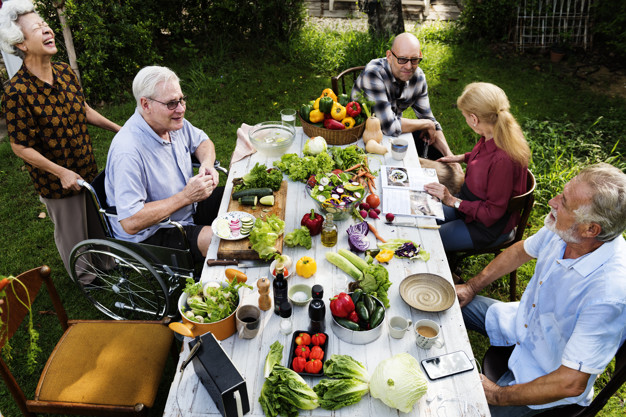
Is your community a good place to grow up and grow old?
Kristin Litzelman
University of Wisconsin
Older adults are a dynamic resource in our communities with diverse needs and wants. It can be a challenge, though, for communities to meet the needs of older residents and families, while also providing opportunities for economic and community engagement. Becoming more aging-friendly is a benefit to all communities, helping them become more livable and increasing productivity and supporting community well-being. In 2016, the US Census Bureau reported that 15% of Americans were 65 years of age and older. By 2050, more than one in five Americans will be 65 or older, and nearly 5% will be 85 or older.
Addressing the needs of the aging population and their families is a critical part of maintaining community health and wellness, preventing public health problems, and supporting economic productivity as well as development across the age spectrum. Older adults and their families often express a desire to “age in place”, and communities with aging-friendly characteristics and values facilitate that. Further, such communities can limit or mitigate the potential strain on social services that may accompany an aging population, by thinking ahead and preventing problems. Communities that enact aging-friendly initiatives are also strengthened by capitalizing on the strengths and experiences of all members of their population across the lifespan. Finally, an “aging-friendly” community is also an “everyone-friendly” (or livable) community. These initiatives can
According to Moving beyond place: Aging in Community. (Generations, 33(2), 12-17, Thomas, W. H., & Blanchard, J. M. (2009).) aging-friendly or livable communities share 6 qualities:
1) INCLUSIVE – People of all ages, races/ethnicities, and abilities, especially elders, are welcome.
2) SUSTAINABLE – Residents are committed to a lifestyle that is sustainable environmentally, economically, and socially.
3)HEALTHY – The community encourages and supports wellness of the mind, body, and spirit, and, to the same degree, plans and prepares programs and systems that support those dealing with disease, disability, and death.
4) ACCESSIBLE – The setting provides easy access to the home and community. For example, all homes, businesses, and public spaces are wheelchair-friendly and incorporate universal design features (i.e., a process of creating spaces and products to be used by people with minimal need for specialized accessibility adaptations or modifications).
5) INTERDEPENDENT – The community fosters reciprocity and mutual support among family, friends, and neighbors across generations.
6) ENGAGED – Promotes opportunities for community participation, social and civic engagement, education, and creative expression.
Communities can move towards aging-friendliness and livability by assessing how well their communities embody these six characteristics, identifying areas for improvement, and developing goals and strategies to effect policy, systems, and environment change. In our recent publication in the Journal of Family and Consumer Sciences, we found that many Extension educators in Wisconsin felt that facilitating conversations around the priorities and strategies for developing aging friendly communities is needed and would have a positive effect on the communities they serve (Richie, S., Dickrell, K., Jensen, J., & Litzelman, K. (2019). Creating Aging-Friendly Communities: Feasibility of a Family Life Educator-Facilitated Process. Journal of Family & Consumer Sciences, 111.) There are a number of tools and resources to support such efforts, such as the AARP’s Roadmap to Livability; the World Health Organization’s Aging Friendly World; Iowa State’s Midlife Study Circles program (a more grass-roots, community-drive program); and the University of Wisconsin’s home-grown Creating Aging Friendly Communities assessment.
Take a moment to think about your community: Is your community a good place to grow up and grow old? Will your community meet your needs when you are 65, 75, 85, 95…or even 105? If not, what can you do now to begin to make your community a friendly and supportive environment for persons of all ages? The NCRAN webinar from 4/5/2019 is designed to help you learn more about aging friendly communities and how you can address these questions.



